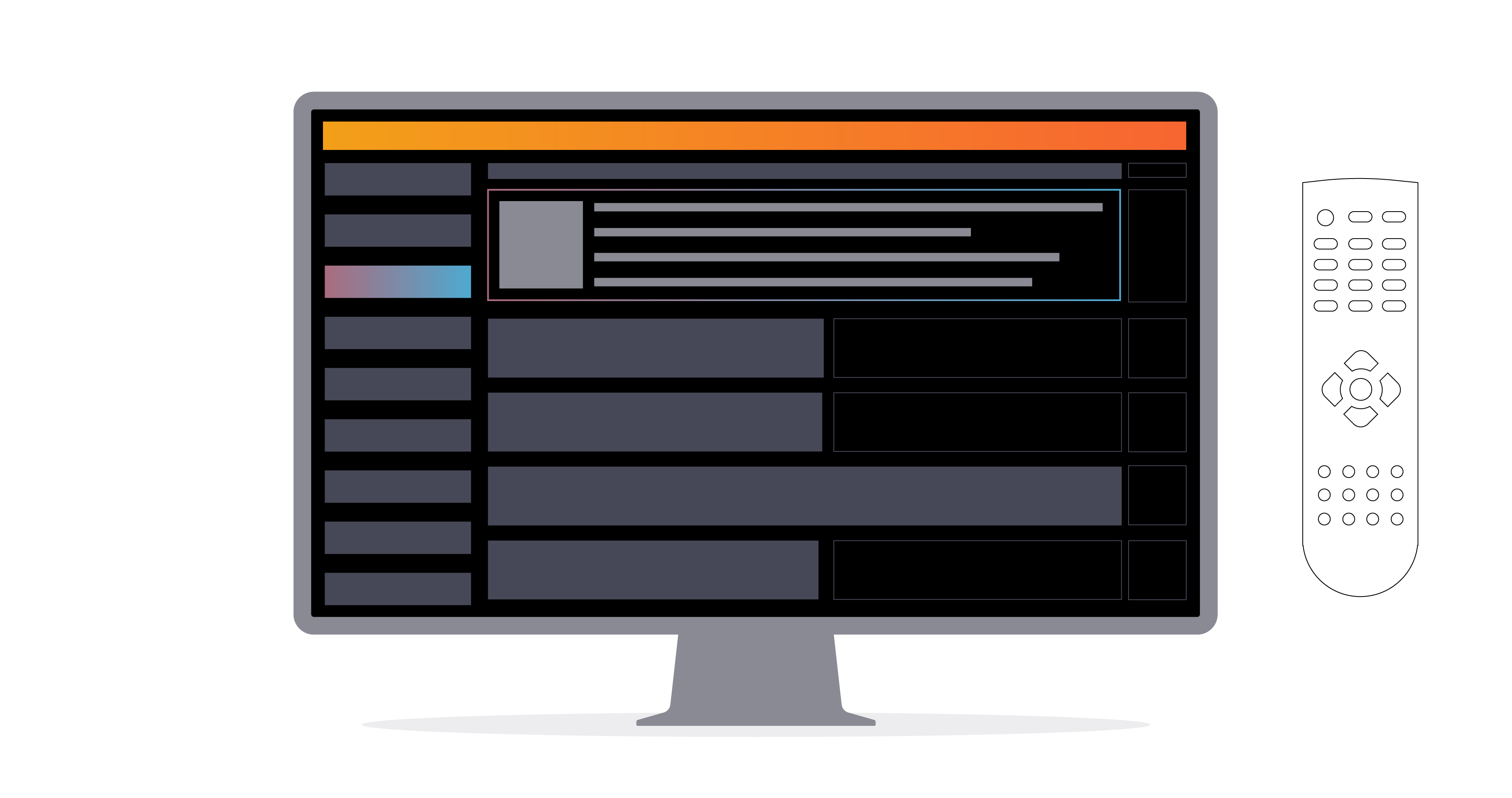What Makes a Great Online Video Player? Announcing Brightcove’s Player V7, with 15% Faster Load Times
Features & Updates

Streaming platforms are only as good as their online video players. Research any of the top providers and you’ll find comparisons on everything from pricing and packaging to bells and whistles. But at the end of the day, none of these things have anything to do with a player’s primary purpose: providing a quality viewing experience.
Before settling on the best platform for your business, take a look under the hood and make sure the player can deliver a proper experience. The following are some of the player features we think are essential, many of which we prioritized for our new player, Brightcove Player V7. Thanks to meticulous upgrades and internal refactoring, it’s our lightest and fastest player yet. If you’re a Brightcove customer, read our Migration Guide to learn how to upgrade your player.
Load Time
In the streaming business, you can measure a player’s speed in revenue. From media companies combating churn to enterprises battling bounce rates, video load times can make the difference between happy and frustrated viewers.
Yes, internet speeds continue to increase globally, but so has streaming quality. Furthermore, waiting until all your customers have gigabit home internet or 5G cellular service isn’t a business plan. Your streaming platform needs to be committed to maintaining engagement for all types of viewers.
A great online video player will be lightweight and regularly updated. Just like apps and operating systems, players need to support the latest technology without getting bloated with legacy code. Great players should not only be lean and efficiently coded, they should be striving to decrease load times (for example, Brightcove Player V7 is 15% faster than Player V6).
Viewability
For media companies, saving on content delivery costs is just as important as acquiring new customers. This is why Netflix displays its well-known “Are you still watching?” dialog after three auto-played TV episodes or 90 minutes of uninterrupted viewing. By forcing the viewer to engage, Netflix saves on delivering content to viewers who have left the room or fallen asleep.
In the same way, the best video players today will offer a feature called viewability. Viewability is an advertising term that also applies to video and refers to whether your content was “viewable” by your audience. A player with viewability enabled can pause the stream when the player isn’t viewable, significantly cutting delivery costs.
Beyond the obvious implications for video advertising, viewability can also improve the accuracy of video engagement. For example, when viewers browse with multiple pages open, any videos playing would report having 100% engagement. Players with viewability could account for the unviewed videos and prevent inaccurate engagement from skewing your content strategy.
Brightcove Player V7 includes viewability out of the box, with configurable options like pausing playback when not viewable or logging a “video impression event” after two seconds of playback with 50% visibility.
Accessibility
Digital accessibility has been around almost as long as the internet has been mainstream. The first Web Content Accessibility Guidelines were established in 1999 by the World Wide Web Consortium (W3C). Today, WCAG 2.1 is the international standard to meet the legal accessibility requirements in many countries (ADA in the United States, EEA in Europe, JIS X 8341 in Japan, etc.). Of the three levels of compliance, most businesses try to meet the second (AA), as even W3C recognizes the highest level (AAA) isn’t possible for some content.
Because companies are legally required to be accessible, most streaming players—including Brightcove Player V7—are WCAG 2.1 AA compliant. However, platforms provide different levels of transparency on their compliance.
Players like Brightcove also provide a Voluntary Product Accessibility Template (VPAT), a comprehensive analysis of the platform’s adherence to accessibility standards. Though they’re only required by U.S. federal government agencies, VPATs allow businesses to assess the level of accessibility for themselves.
Customization
Today’s brands recognize the importance of coherent viewing experiences. Markets are saturated, and content is stuffed into seemingly every corner of the internet. Standing out from all the noise and competition means crafting an unforgettable experience that is unmistakably on brand.
As HTML5 players became standard, so did player customization. In fact, many online video platforms (OVP) provide easy-to-use options for editing everything from colors to controls. So instead of looking like every other brand with an embedded YouTube player, your OVP can match your brand colors.
That said, some brands need next-level customization. They want to completely reskin the player to look like nothing else. Great players like Brightcove Player V7 are built on Video.js, an open-source platform that allows you to build skins completely from scratch using HTML and CSS.
Playback Support
Thanks to a plethora of devices and manufacturers, digital video playback isn’t a given. From Apple vs. Android to Roku vs. Smart TVs (not to mention web browsers), different devices often require different codecs and streaming protocols. Understanding which streaming protocols support playback on each device is key to reaching your target audience.
For example, HLS (HTTP Live Streaming) supports playback on most mobile devices, the most popular web browsers, and many set-top boxes like Roku. However, to reach the entire mobile market, particularly if you're using DRM, you’ll need a player that can also stream MPEG-DASH. DASH is also supported on many of the most popular Smart TV brands (a rapidly growing segment in the CTV market).
Players that use the VHS 3 playback engine, like Brightcove, can play both HLS and DASH.
Low-Latency Livestreaming
One of the biggest challenges with digital video is the immense amount of data it takes to stream. In fact, high-definition digital video came with a hefty price tag beyond storage and bandwidth costs.
While cable could broadcast live with less than five seconds of latency, streaming protocols like HLS were often well over 20 seconds. For brands investing in live events like sports, and especially in online betting, high latency was a nonstarter.
Some protocols now offer a low-latency version like LL-HLS (low-latency HLS), which offers three to eight seconds of latency. So if livestreaming is an important part of your business plan, make sure the player can play LL-HLS, not just HLS. Like Brightcove.
Adaptive Bitrate
HLS and DASH are streaming protocols built on adaptive bitrate (ABR) streaming technology, meaning they can adapt video quality to available bandwidth. The player encodes several renditions of a video asset to fit different scenarios and uses an ABR algorithm to select one and switch it as needed to reduce buffering.
Every player has its own encoding ladder to determine the quality of each rendition, and different ladders can have a dramatic effect on the viewing experience. For example, sports content requires a ladder skewed to higher quality renditions than animated content. So if most of your content is animated, a sports-quality encoding ladder wouldn’t look much better, but it would cost more in storage and bandwidth.
Just like a video player’s code needs to be regularly updated, ABR algorithms need to be refreshed to reduce rebuffering while maintaining high-quality playback. Not only does Brightcove’s new Player V7 reduce rebuffering, it’s less wasteful in throwing away already-buffered data, reducing bandwidth usage and delivery costs.
Advanced Security
Media companies understand the importance of content security. That’s why you don’t see any of them publishing their most valuable content on YouTube (unless it’s part of a marketing gimmick). The meager security afforded by unlisted or private links can be easily bypassed by accidentally sharing links, emails, or credentials.
Whether you’re streaming licensed content, gating product demos, or sharing confidential board meetings with investors, great players like Brightcove offer advanced security features like DRM and entitlements.
Digital Rights Management (DRM) provides industry standard AES-256 encryption that blocks hackers from intercepting network traffic. Entitlements restrict access at the user level, preventing your content from leaking because a colleague was too quick on the draw with their email forward.
Developer Resources
As video players evolved and capabilities improved, it signaled more than a new era of player customization. The digital space was maturing, and with it came more advanced monetization and marketing strategies.
Media buying on CTV is much more targeted than broadcast advertising. Interactive e-commerce video provides a streamlined customer experience light years beyond QVC. Even business websites feature tons of custom elements far outside the box any standard CMS can offer.
To meet the needs of the latest digital strategies, streaming platforms need more than out-of-the-box features and integrations. They need robust developer resources.
Businesses with advanced strategies want to be able to build their players into their own bespoke ecosystems. To do that, OVPs need to have APIs for every component: ingest, player, playback, analytics, etc. Not to mention SDKs for every supported platform. Brightcove not only offers all of these, we have over 1,000 pages of product documentation in several languages.
Streaming video has come a long way, and with proper developer support, your business will be ready for where it goes next.
Learn more in our PLAY episode, “APIs That Maximize Your ROI.”



